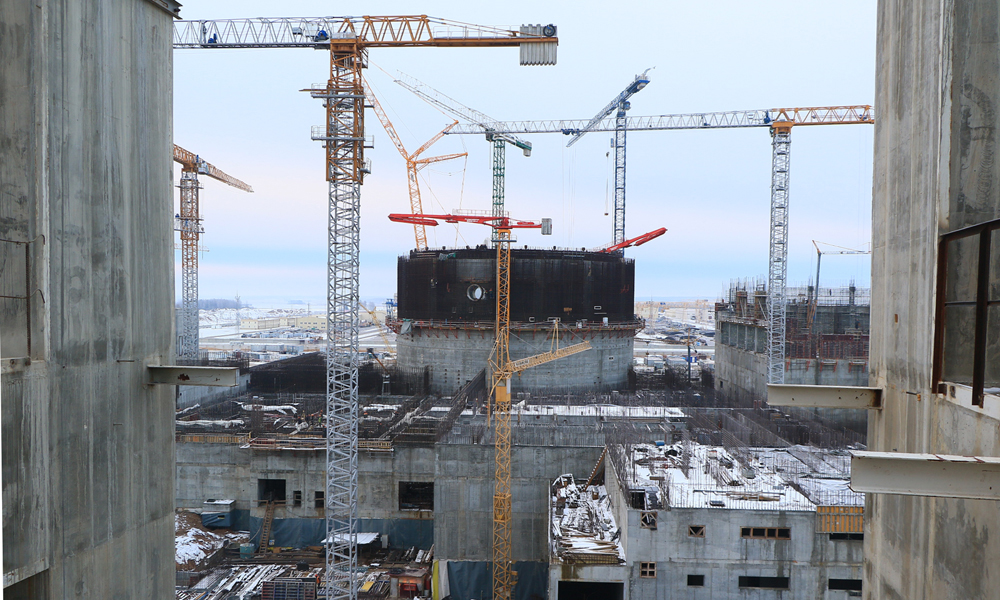
Belarus NPP: All Safety Threats Adressed
back to contentsThe SEED (Sight and External Events Design) mission was yet another milestone in the long-term partnership between Belarus and the IAEA. All IAEA missions are sent at the invitation of the country hosting a nuclear site to obtain expert advice and support. Belarus came forward with this initiative in 2014, and its move was appreciated by the neighboring Lithuania.
The mission to Belarus spanned five days, from 16 till 20 January, as IAEA experts assessed the plant site near the Belarusian town of Ostrovets (Astravyets) for compliance with international safety requirements, as well as resistance of the plant’s structures and systems to external and internal hazards. They also evaluated the structures’ safety margins designed to account for the post-Fukushima requirements. The IAEA mission included leading international experts from the USA, Poland, France, Hungary, Turkey and Romania.
“As part of the mission’s assignment, we concluded that the Belarusian authorities duly accounted for all potential external hazards in the nuclear power plant design,” said Grzegorz Rzentkowski. According to him, the SEED mission will provide the Belarusian government with a final report on the mission’s results within 90 days after its completion. The report will be made available to general audience.
“We have concluded that the design of the Belarusian nuclear plant accounts for all external factors and safety issues. All the required measures have been taken to prevent the worst scenario from happening. We have also discussed safety lessons learned from Fukushima. Welcoming approach and openness on the Belarusian part facilitated the success of our mission,” added Grzegorz Rzentkowski. He also noted that Belarus followed positive practices in the nuclear construction project. Most notably, local experts perform regular screening of external threats selected with reasonable criteria. It is the nuclear operator’s duty to provide the regulator with comprehensive safety and other data.
Cooperation with IAEA gathers pace
Belarus plans to invite at least one more IAEA mission, this time to review the emergency preparedness and response framework, by the end of this year. The country has also invited the Pre-Operational Safety Review Team (Pre-OSART) mission to take place closer to the plant’s commissioning date. The work is ongoing to prepare for the Phase III Integrated Nuclear Infrastructure Review (INIR-III) mission that will visit Belarus when its first nuclear power plant is about to be put in operation.
Vladimir Potupchik
Minister of Energy of the Republic of Belarus
“Belarus has made a firm decision to develop its national nuclear industry and build a nuclear plant in full compliance with its international commitments. Work is now in full swing on the construction site. I would like to stress that it is carried out in accordance with the IAEA standards and with the help of the Agency’s consultants and experts.”
Belarus demonstrates openness
The Belarusian nuclear power plant is widely discussed in Lithuania. As Iya Malkina, First Deputy Minister of Natural Resources and Environmental Protection of Belarus, says, Belarus demonstrates openness and expends much effort in improving the dialog with Lithuania. The parties held two rounds of bilateral consultations in July and September 2016 to discuss technical aspects of the nuclear plant project. On 23 December, the Belarusian Ministry of Natural Resources sent the Lithuanian Ministry of Environment an invitation to continue the dialog on the expert level.
Besides, Belarus is prepared to discuss, among other things, the establishment of a joint body to consider environmental and radiation safety issues, a joint radiation monitoring system to be installed on the both sides of the border, and a joint group for post-project analysis of the Belarusian nuclear plant. Belarus is also ready to move forward with a bilateral agreement on implementation of the Espoo Convention.
FOR REFERENCE:
The Belarusian nuclear power plant is built by Russia near the town of Ostrovets (Astravyets), approximately 50 kilometers from Vilnius, the capital of Lithuania. The first reactor is scheduled to be brought online in 2019, followed by the second reactor in 2020. As announced earlier by Vadim Zakrevsky, Deputy Energy Minister of Belarus, the share of natural gas in heat and power generation will shrink to 70% after the nuclear plant is connected to the grid. According to him, the commissioning of a nuclear power plant is provided for in the national energy development program for 2016–2020. The plans are to decommission up to 400 MW of inefficient capacity and replace it with new, more efficient power stations. Fuel savings are expected to reach 850–1,000 tons of equivalent fuel. The nuclear power plant and power generation facilities fired with local fuels are planned to cut the consumption of natural gas by 2.5 billion cubic meters and reduce its dominant share in heat and power generation from the current 90% to 70%.




